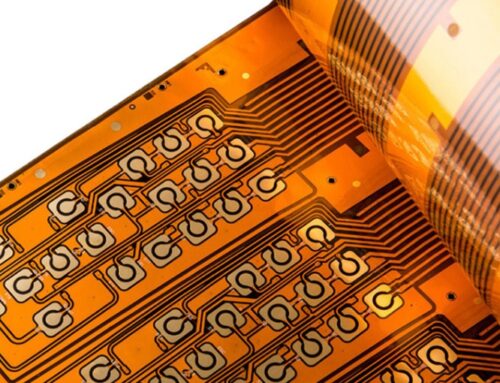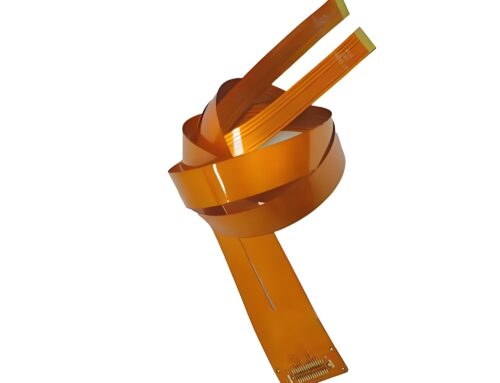Rigid Flex PCB Stackup: Key Challenges and Opportunities
Introduction
The evolution of printed circuit boards (PCBs) has led to the development of rigid-flex PCBs, combining the best of both rigid and flexible circuits. The stack-up design of these PCBs plays a crucial role in determining their performance, reliability, and manufacturability. This article explores the intricacies of rigid-flex PCB stack-up, delving into industry challenges and potential opportunities. Emphasis will be placed on the Gekun brand, renowned for its cutting-edge solutions in PCB technology.

Understanding Rigid Flex PCB Stackup
Rigid-flex PCBs combine rigid and flexible substrates in a single board, allowing for greater design versatility and improved mechanical performance. The stack-up design, which refers to the layering sequence and materials used, is critical in achieving the desired electrical and mechanical properties. This combination is particularly advantageous in applications requiring both durability and flexibility, such as aerospace, medical devices, and consumer electronics.
Key Components of Rigid-Flex PCB Stackup
A typical rigid-flex PCB stack-up includes:
1. Rigid Layers: Made from materials like FR4, these layers provide structural support and house most of the components.
2. Flexible Layers: Usually composed of polyimide, these layers connect the rigid sections and allow for bending and movement.
3. Adhesives: Used to bond the rigid and flexible layers, ensuring mechanical stability.
4. Coverlays and Overlays: Protective films are applied to the flexible layers to prevent damage and improve durability.
The design and arrangement of these components significantly impact the performance of the PCB, influencing factors like signal integrity, mechanical resilience, and thermal management.
Challenges in Rigid Flex PCB Stackup Design
Signal Integrity
Maintaining signal integrity in rigid-flex PCBs is challenging due to the differing dielectric constants and physical properties of the materials used. Variations in impedance and signal propagation can lead to signal loss and distortion, particularly in high-frequency applications.
Mechanical Stress
Rigid-flex PCBs are often subjected to mechanical stress during assembly and operation. The transition areas between rigid and flexible sections are particularly vulnerable to stress concentration, which can lead to delamination or cracking.
Thermal Management
Effective thermal management is essential to prevent overheating and ensure reliable operation. The stack-up design must facilitate efficient heat dissipation, which can be challenging given the different thermal conductivities of the materials involved.
Opportunities in Rigid Flex PCB Stackup
Enhanced Design Flexibility
Rigid-flex PCBs offer unparalleled design flexibility, allowing engineers to create complex geometries and optimize space utilization. This flexibility is particularly beneficial in compact and lightweight applications, such as wearable electronics and miniature medical devices.
Space and Weight Reduction
By integrating rigid and flexible circuits, designers can eliminate the need for connectors and cables, reducing both the space and weight of the final product. This reduction is critical in aerospace and automotive applications, where every gram counts.
Improved Reliability
The robust construction of rigid-flex PCBs enhances their reliability, particularly in harsh environments. The elimination of connectors and cables also reduces potential points of failure, contributing to longer product lifespans and lower maintenance costs.
Gekun’s Innovative Approaches
Gekun has been at the forefront of rigid-flex PCB technology, offering innovative solutions that address industry challenges. Their advanced stackup designs incorporate high-performance materials and optimized layer configurations to ensure superior signal integrity, mechanical resilience, and thermal management. Gekun’s commitment to quality and reliability makes them a trusted partner in the PCB industry.
Future Trends in Rigid Flex PCB Technology
The future of rigid-flex PCB technology is promising, with ongoing advancements aimed at enhancing performance and expanding application areas. Key trends include:
1. Miniaturization: As electronic devices become smaller, the demand for compact and lightweight rigid-flex PCBs will continue to grow.
2. Higher Frequencies: The increasing use of high-frequency applications, such as 5G and advanced computing, will drive the development of materials and designs that maintain signal integrity at higher frequencies.
3. Integration with Flexible Electronics: The integration of rigid-flex PCBs with flexible electronics will open up new possibilities in wearable technology, medical implants, and more.

Conclusion
Rigid-flex PCB stack-up design is a complex but rewarding endeavor, offering numerous benefits in terms of design flexibility, space and weight reduction, and reliability. By addressing the challenges of signal integrity, mechanical stress, and thermal management, and leveraging opportunities for innovation, the industry can continue to push the boundaries of what is possible. Gekun’s cutting-edge solutions exemplify the potential of rigid-flex PCBs, paving the way for future advancements and applications.
In summary, the rigid-flex PCB stackup is a pivotal aspect of modern electronics, with significant implications for performance and reliability. As the industry evolves, staying abreast of the latest trends and innovations will be crucial for engineers and designers aiming to harness the full potential of this versatile technology.







Leave A Comment